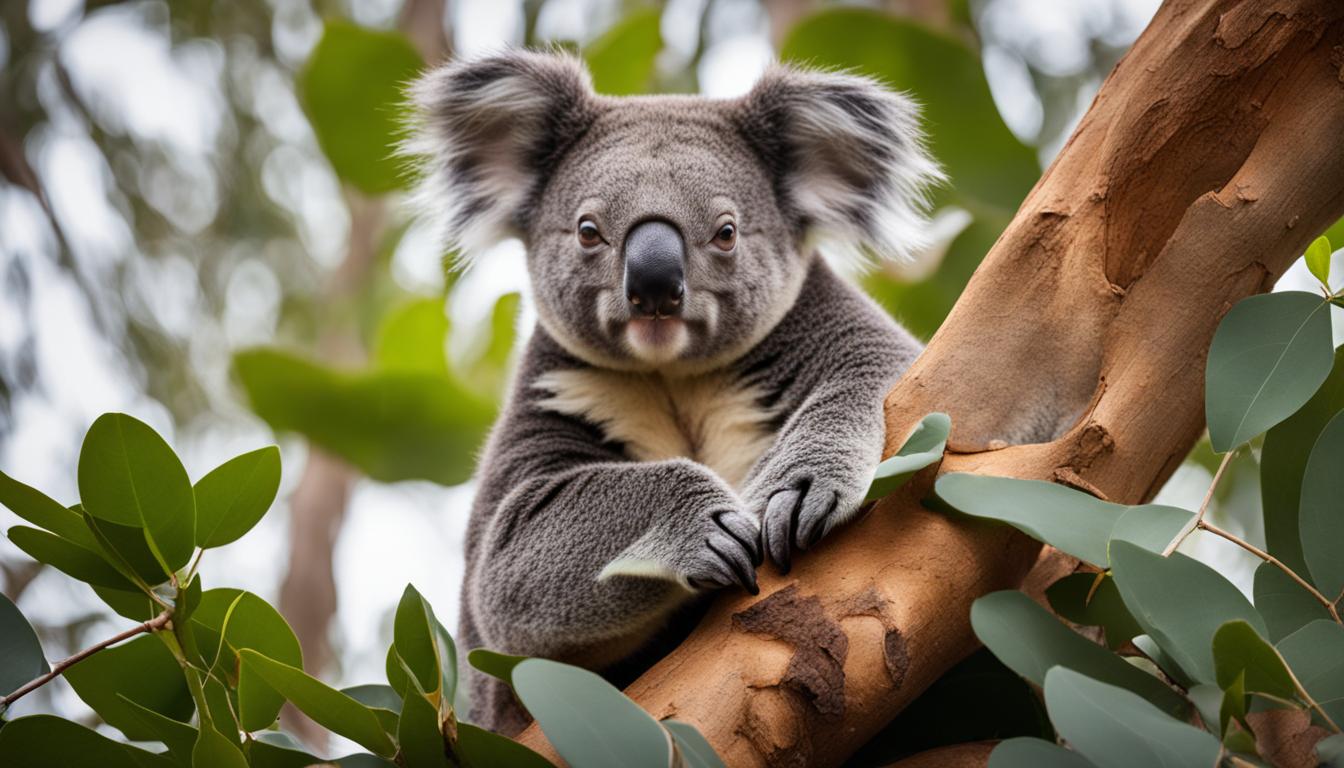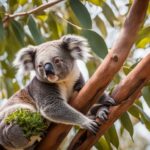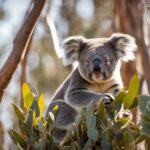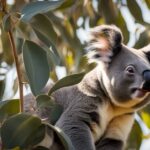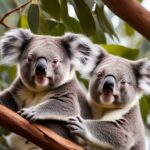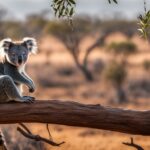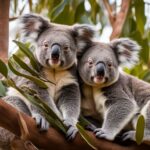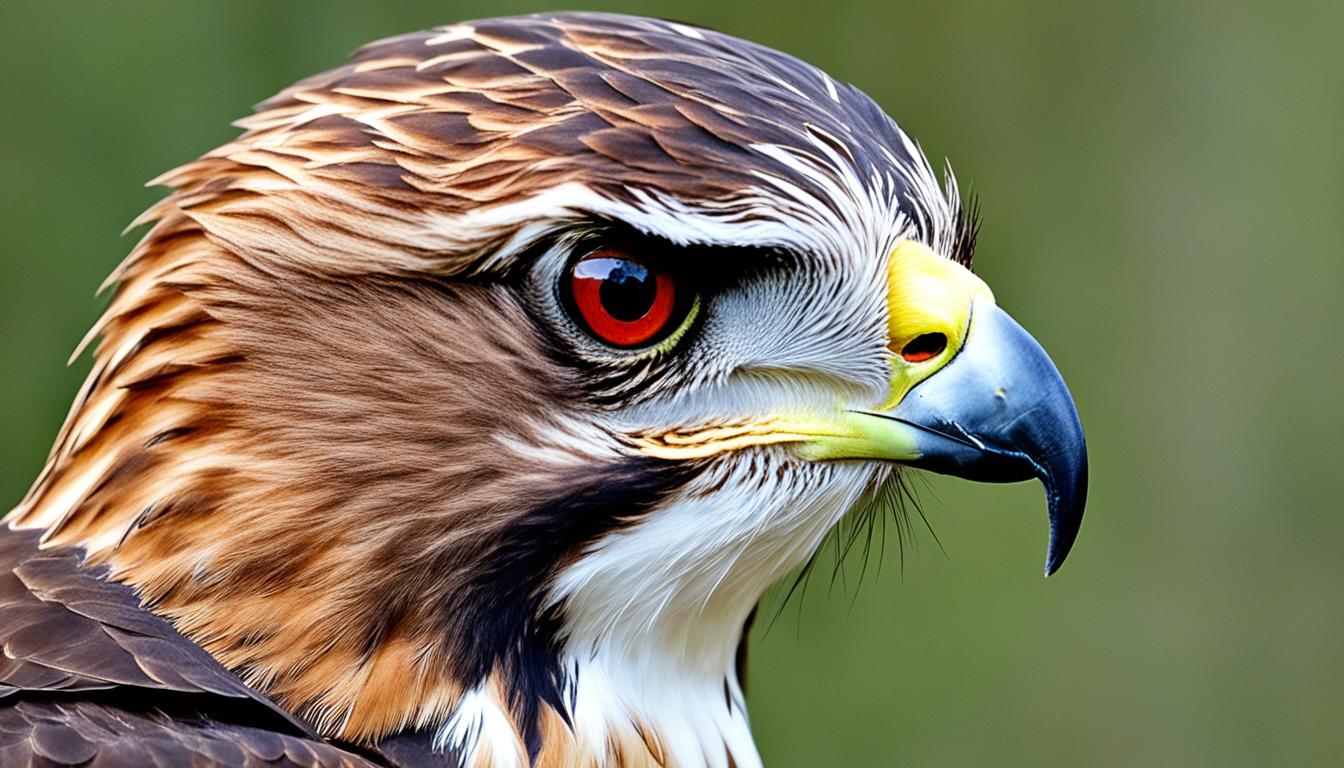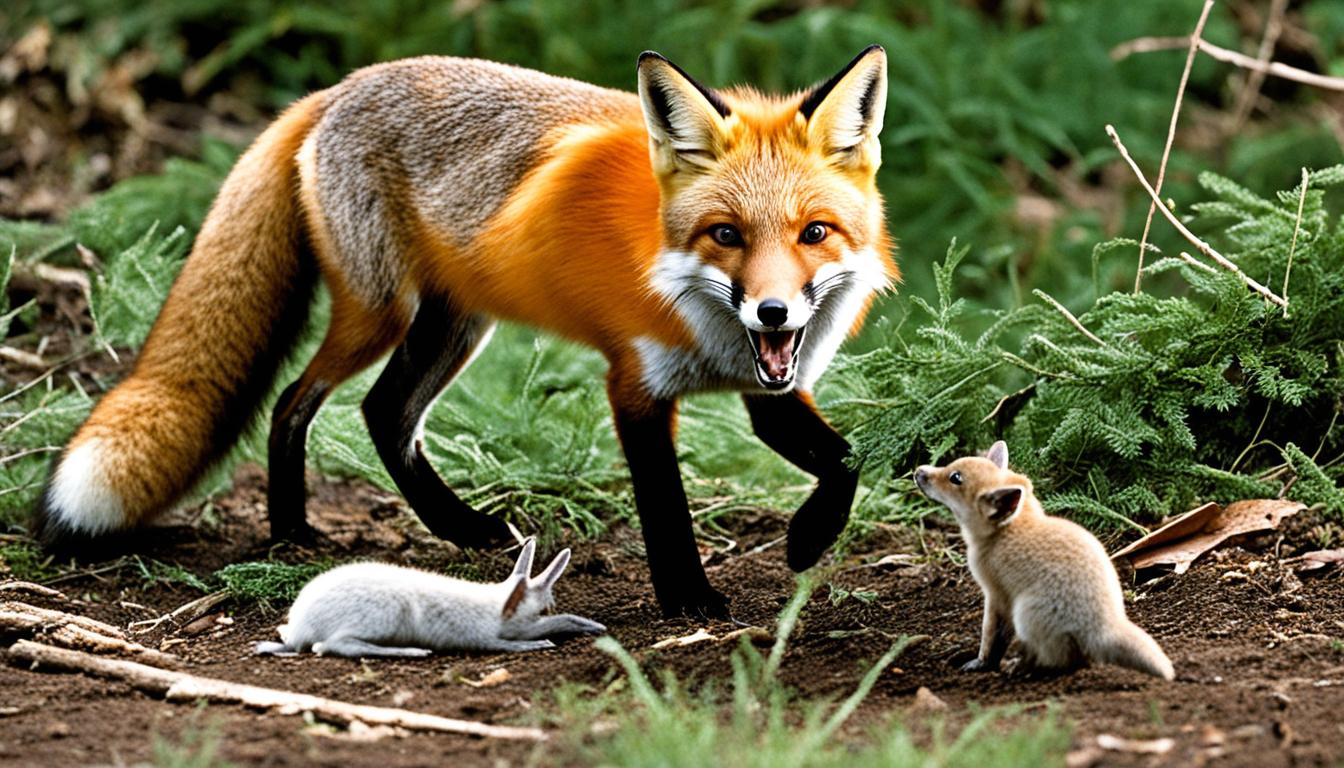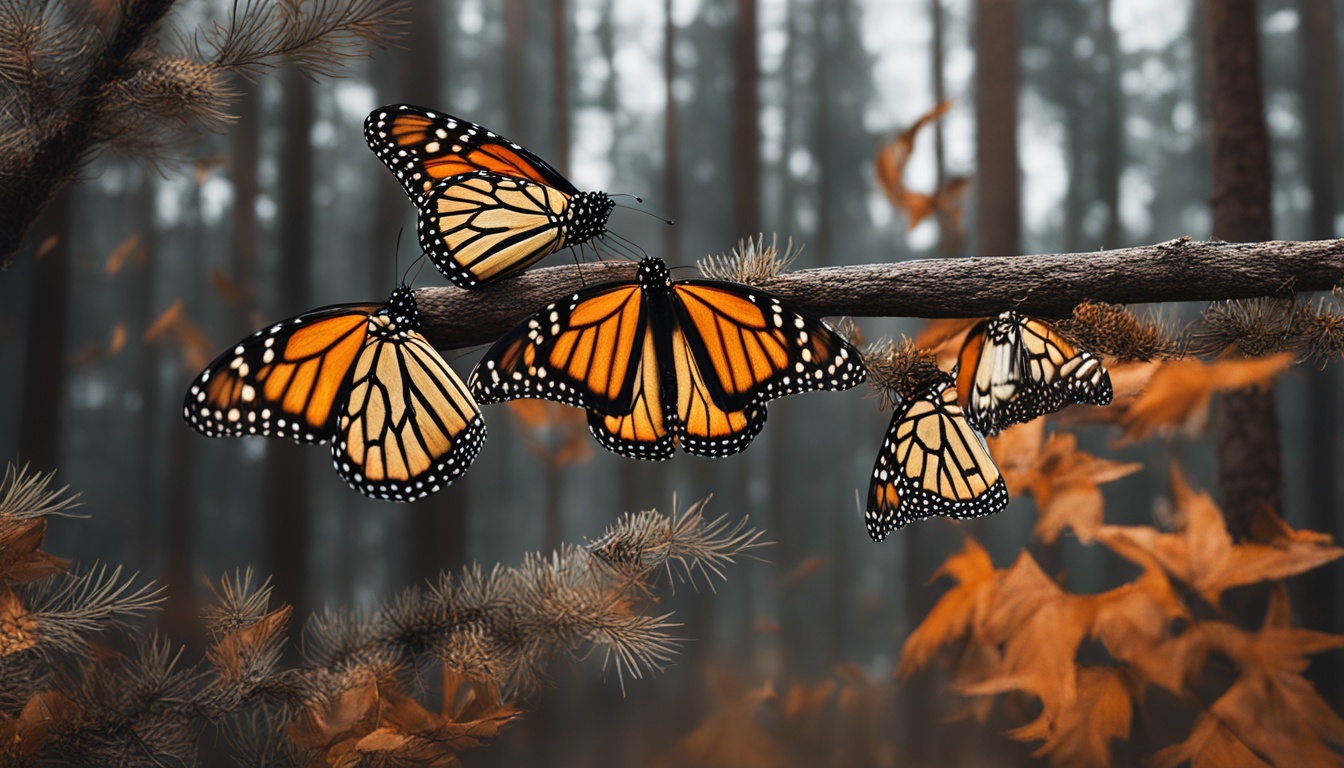Welcome to our blog post on the fascinating world of koalas! In this article, we will explore the specific types of eucalyptus trees that koalas prefer to eat. Koalas, known for their adorable appearance and unique diet, rely heavily on eucalyptus trees for their nutrition and survival.
As you may already know, the koala habitat is primarily composed of eucalyptus forests, providing a diverse selection of trees for their dietary needs. These magnificent creatures feed almost exclusively on a few preferred tree species, which are of primary and secondary importance. It’s fascinating how their food preferences can vary by region, local area, and season.
Koalas not only depend on eucalyptus trees for their food but also for shelter and resting, especially during extreme weather conditions. These trees play a crucial role in maintaining the health and well-being of koala populations.
In this article, we will delve into the specific eucalyptus tree species that koalas prefer in different regions, highlighting their importance in the koala diet. By understanding their dietary preferences and conserving their habitat, we can contribute to the protection and conservation of these beloved native Australian wildlife species.
The Importance of Eucalyptus Trees in the Koala Diet
Koalas have a unique and specialized diet consisting almost exclusively of eucalyptus leaves. These leaves play a crucial role in the koala’s nutrition and overall well-being. With approximately 13% tannins, 2% minerals, and 18% fiber, eucalyptus leaves provide essential nutrients and roughage needed for digestion.
Koalas have evolved to adapt to the toxins present in eucalyptus leaves through specialized liver enzymes and a longer digestive transit time. This allows them to effectively detoxify the leaves and extract the nutrients they need. Their slow metabolic rate further supports their ability to efficiently utilize the energy from their food source.
“Eucalyptus leaves make up the majority of a koala’s diet, providing the necessary nutrients and fibers for their survival and well-being.” – Koala Conservation Society
Conservation efforts for koalas include the preservation and restoration of eucalyptus forests, ensuring a sustainable supply of their primary food source. By protecting these important trees, we can help to safeguard the future of koalas and their unique ecosystem.
| Key Nutrients in Eucalyptus Leaves | Percentage |
|---|---|
| Tannins | 13% |
| Minerals | 2% |
| Fiber | 18% |
| Fat | 8% |
| Carbohydrates | 5% |
| Proteins | 4% |
Understanding and protecting the importance of eucalyptus trees in the koala diet is crucial for their conservation. By focusing on habitat preservation and sustainable forestry practices, we can ensure that koalas have access to the food they need to thrive.
Varieties of Eucalyptus Trees Preferred by Koalas in Different Regions
Koalas, being highly specialized feeders, have distinct preferences when it comes to their food trees. These preferences vary depending on the specific region and habitat they inhabit. Understanding the different eucalyptus tree species preferred by koalas in various regions is crucial for their conservation and ensuring their dietary needs are met.
Central and Southern Tablelands Region
In the Central and Southern Tablelands region, koalas have a preference for primary food trees such as Ribbon gum and River red gum. These tall, majestic gums provide the koalas with the necessary nutrition and fibers they require. Additionally, koalas in this region also rely on secondary food trees like Candlebark and White box for their dietary needs.
Central Coast Region
The Central Coast region is home to koalas that favor primary food trees such as Parramatta red gum and Forest red gum. These trees are essential in providing the koalas with their primary source of nourishment. In addition, koalas in this region also rely on secondary food trees such as Broad-leaved sally and Swamp gum.
Far West and South West Region
Koalas in the Far West and South West region have a preference for primary food trees like River red gum and Coolabah. These trees play a vital role in providing the koalas with the necessary nutrients to thrive in their habitat. Additionally, koalas in this region also rely on secondary food trees like Bimble box and Tumbledown gum to supplement their diet.
Understanding the specific eucalyptus tree species preferred by koalas in different regions helps in identifying and protecting their habitat. By ensuring the availability of these preferred trees, we can contribute to the conservation and survival of these iconic Australian wildlife species.
Koala Habitat and Food Trees in the North Coast
The North Coast region is a vital habitat for koalas, providing them with the necessary food trees for their diet. These trees play a significant role in the survival and conservation of the koala population in this area. Primary food trees in the North Coast region include the majestic Tallowwood, Parramatta red gum, and Forest red gum. These tall eucalyptus trees provide abundant foliage that koalas rely on for their dietary needs.
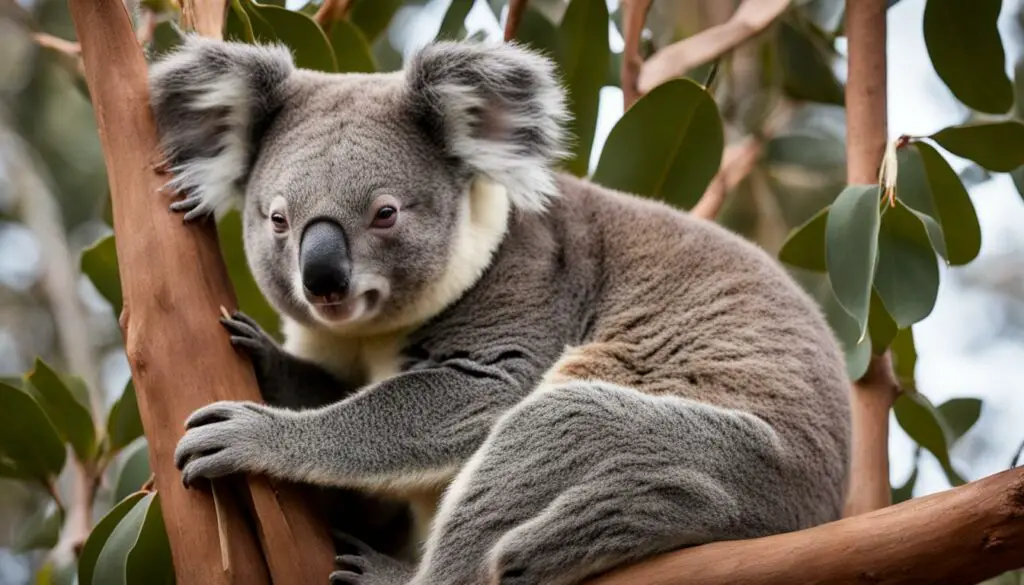
Secondary food trees in the North Coast region consist of Narrow-leaved red gum and Craven grey box. These trees supplement the koalas’ diet and offer additional nutritional resources. In addition to food trees, koalas in this region also utilize specific tree species for resting, such as Mountain mahogany and Rudder’s box. These trees provide shelter and a safe place for koalas to rest, especially during extreme weather conditions.
To ensure the continued well-being of koalas in the North Coast region, it is crucial to protect and conserve their habitat and the availability of these preferred food trees. By preserving the eucalyptus forests and maintaining the diversity of tree species, we can support healthy koala populations and contribute to their long-term conservation.
The Importance of Koala Habitat Conservation
“Protecting and conserving the koala habitat is vital for the survival of this iconic species. The North Coast region offers a unique ecosystem that sustains koalas and provides them with the food and shelter they need to thrive. By preserving their habitat and ensuring the availability of the preferred food trees, we can protect this beloved marsupial and ensure its survival for future generations.”
Koala food trees in the Northern Tablelands
The Northern Tablelands region is home to a diverse range of tree species that provide essential habitat and food for koalas. These tree species play a critical role in sustaining healthy koala populations in the area. Understanding the specific types of eucalyptus trees preferred by koalas in the Northern Tablelands is crucial for their conservation and management.
Primary food trees
Primary food trees are the main source of sustenance for koalas in the Northern Tablelands. These trees provide the necessary nutrients and fibers for koalas’ specialized digestive system. Ribbon gum, Cabbage gum, and Forest red gum are some of the primary food trees preferred by koalas in this region. These trees offer a rich food source and form a significant part of the koala diet.
Secondary food trees
Secondary food trees also contribute to the dietary needs of koalas in the Northern Tablelands. Candlebark, Mountain mahogany, and Eurabbie are among the secondary food trees favored by koalas. These trees provide additional food resources and support the nutritional requirements of koalas throughout the year. Koalas rely on a combination of primary and secondary food trees to meet their dietary needs and sustain their populations.
| Primary Food Trees | Secondary Food Trees |
|---|---|
| Ribbon gum | Candlebark |
| Cabbage gum | Mountain mahogany |
| Forest red gum | Eurabbie |
“Protecting and conserving the habitat and food trees of the koalas is crucial for their survival. By understanding their dietary needs and ensuring the availability of preferred eucalyptus trees, we can contribute to the conservation of these iconic native Australian wildlife species.” – Koala Conservation Society
The Northern Tablelands region provides a range of tree species that are essential for sustaining healthy koala populations. Protecting and preserving the habitat and food trees in this area is vital for the long-term survival of koalas. By recognizing the specific tree species preferred by koalas in the Northern Tablelands, we can prioritize conservation efforts and ensure the continued existence of these iconic Australian animals.
Koala Food Trees in the South Coast
The South Coast region is a crucial habitat for koalas, providing the necessary resources for their survival. In this region, koalas have a strong preference for specific types of eucalyptus trees in their diet. Primary food trees that koalas rely on include Cabbage gum, Forest red gum, and Ribbon gum. These tree species play a vital role in providing the necessary nutrients and fibers for the koalas’ unique digestive system.
Secondary food trees in the South Coast region include Yellow box, Woollybutt, and Brittle gum. These supplementary food sources contribute to the overall dietary variety of koalas and ensure they have a balanced diet. In addition to food, koalas in the South Coast also utilize specific tree species for resting, such as Blue box and Monkey gum. These trees provide essential shelter and resting spots for koalas to protect them from extreme weather conditions.
Ensuring the availability and protection of these preferred eucalyptus trees is crucial for maintaining healthy koala populations in the South Coast region. By preserving their habitat and the food trees they rely on, we can contribute to the conservation of these iconic native Australian wildlife species. Koalas are a national treasure, and it is our responsibility to safeguard their environment and ensure their survival for future generations.
Koala Food Trees in the South Coast
| Primary Food Trees | Secondary Food Trees | Resting Trees |
|---|---|---|
| Cabbage gum | Yellow box | Blue box |
| Forest red gum | Woollybutt | Monkey gum |
| Ribbon gum | Brittle gum |
Koala food trees in the Western Slopes and Plains
The Western Slopes and Plains region is home to a diverse range of eucalyptus trees that koalas rely on for their diet. These tree species provide essential nutrients and fibers necessary for the koalas’ unique digestive system. Primary food trees in this area include River red gum and Coolabah, which are crucial food sources for sustaining healthy koala populations. Secondary food trees in this region consist of Dirty gum, Blakely’s red gum, and Bimble box, among others, which provide additional dietary options.
Koalas in the Western Slopes and Plains also rely on Stringybarks as supplementary food sources. These trees play an important role in providing variety and ensuring the koalas’ nutritional needs are met. By having access to a diverse range of food tree species, koalas are able to maintain a balanced diet that supports their overall health and well-being.
Protecting and conserving the habitat and food trees in the Western Slopes and Plains region is vital for the survival of koalas. It is essential to ensure the availability and sustainability of the preferred eucalyptus trees that koalas depend on. By preserving these habitats and implementing conservation efforts, we can contribute to the long-term viability of koala populations in this region.
Table: Koala food trees in the Western Slopes and Plains
| Food Trees | Role |
|---|---|
| River red gum | Primary food source |
| Coolabah | Primary food source |
| Dirty gum | Secondary food source |
| Blakely’s red gum | Secondary food source |
| Bimble box | Secondary food source |
| Stringybarks | Supplementary food source |
By understanding the specific food tree preferences of koalas in the Western Slopes and Plains region, we can better protect and conserve their habitats. These efforts are crucial for ensuring the long-term survival of this iconic native Australian wildlife species.
Conclusion
Koalas have a strong preference for specific types of eucalyptus trees for their diet. Different regions have different primary and secondary food tree species that koalas rely on. These trees provide the necessary nutrients and fibers for the koalas’ unique digestive system.
Protecting and conserving the habitat and food trees of the koalas is crucial for their survival. By understanding their dietary needs and ensuring the availability of preferred eucalyptus trees, we can contribute to the conservation of these iconic native Australian wildlife species.
By supporting koala conservation efforts and promoting sustainable practices, we can help safeguard the future of koalas and their eucalyptus habitats. Together, we can make a positive impact on their well-being and ensure that these beloved creatures continue to thrive in their natural environment.
Are there specific types of eucalyptus trees that koalas do not prefer to eat?
Yes, there are specific types of eucalyptus trees that koalas do not prefer to eat. While koalas’ diet largely consists of eucalyptus leaves, they tend to avoid certain species due to their toxic compounds or low nutritional value. This can vary depending on the koala population’s local environment.
FAQ
What types of eucalyptus trees do koalas prefer to eat?
Koalas prefer to eat a variety of eucalyptus trees, including Ribbon gum, River red gum, Candlebark, White box, Eurabbie, Yellow box, and Swamp gum.
Why are eucalyptus trees important in the koala diet?
Eucalyptus leaves make up the majority of a koala’s diet and provide them with the necessary nutrients and fibers. The leaves contain detoxifying agents that koalas have adapted to, making them essential for their survival.
Which eucalyptus trees do koalas prefer in different regions?
The preferred eucalyptus trees for koalas vary by region. In the Central and Southern Tablelands, primary food trees include Ribbon gum and River red gum, while secondary food trees include Candlebark and White box. Each region has specific preferences for koalas’ dietary needs.
What are the food trees for koalas in the North Coast region?
Primary food trees in the North Coast region include Tallowwood, Parramatta red gum, and Forest red gum. Secondary food trees include Narrow-leaved red gum and Craven grey box. Certain tree species like Mountain mahogany and Rudder’s box are used for resting.
What are the food trees for koalas in the Northern Tablelands?
Primary food trees in the Northern Tablelands include Ribbon gum, Cabbage gum, and Forest red gum. Secondary food trees consist of Candlebark, Mountain mahogany, and Eurabbie, among others. Stringybarks are utilized as supplementary food sources.
What are the food trees for koalas in the South Coast region?
Primary food trees in the South Coast region include Cabbage gum, Forest red gum, and Ribbon gum. Secondary food trees consist of Yellow box, Woollybutt, and Brittle gum, among others. Blue box and Monkey gum are used by koalas for resting.
What are the food trees for koalas in the Western Slopes and Plains region?
Primary food trees in the Western Slopes and Plains region include River red gum and Coolabah. Secondary food trees consist of Dirty gum, Blakely’s red gum, and Bimble box, among others. Stringybarks are relied upon as supplementary food sources.
How do eucalyptus trees and koala conservation relate?
Protecting the habitat and food trees of koalas is crucial for their conservation. By understanding their dietary needs and ensuring the availability of preferred eucalyptus trees, we can contribute to the survival of these iconic native Australian wildlife species.

